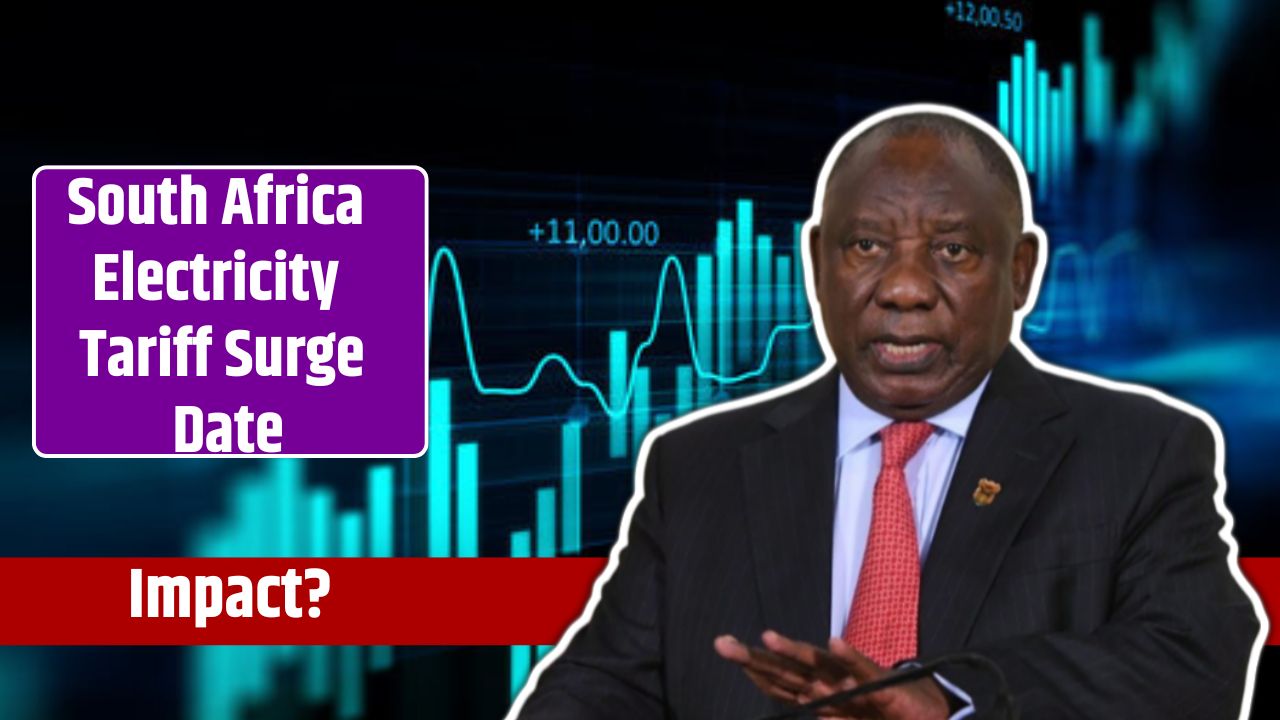South Africans will see a 12.7% electricity tariff increase from April 1, 2025, following approval from the National Energy Regulator of South Africa (NERSA).
This increase affects households and businesses, raising concerns over higher energy costs but also encouraging energy efficiency and renewable energy adoption.
This guide breaks down the tariff hike, its impact, and practical solutions to help you manage rising electricity costs.
South Africa Electricity Tariff Surge
| Aspect | Details |
|---|---|
| Tariff Increase | 12.7% from April 1, 2025 |
| Future Increases | 5.36% in 2026/27, 6.19% in 2027/28 |
| Eskom’s Initial Request | 36% increase |
| Regulator Decision | NERSA approved a lower increase |
| Economic Context | Weak economy, cost-of-living crisis |
| Alternative Solutions | Renewable energy, energy efficiency |
| Official Source | NERSA Website |
Although the approved 12.7% increase is lower than Eskom’s proposed 36%, it still puts financial pressure on consumers. However, energy-saving strategies can help reduce costs.
Why Are Electricity Tariffs Increasing?
NERSA regulates electricity prices in South Africa, balancing Eskom’s financial needs with affordability for consumers. Eskom had initially requested a 36% increase, citing:
1. Rising Operational Costs
- Higher fuel prices and coal transportation costs.
- Maintenance and repair expenses for aging infrastructure.
- Labor costs and wage increases.
2. Debt Repayment
Eskom faces massive debt and requires additional revenue to repay loans and keep operations running.
3. Infrastructure Investments
Funding is needed for power plants, substations, and grid expansion to improve electricity supply.
4. Load Shedding Mitigation
Eskom needs investment in new power projects to reduce load shedding and improve reliability.
NERSA approved a lower increase to balance Eskom’s needs while minimizing the burden on households and businesses.
Impact of the Tariff Increase
For Households
- Higher monthly electricity bills.
- Increased costs for heating, cooking, and daily appliances.
- More motivation to invest in solar power and energy-efficient appliances.
Example:
If a household currently spends R1,000 per month on electricity, they will pay R127 more from April 2025 due to the 12.7% hike.
For Businesses
- Higher operational costs, especially for industries that rely on electricity.
- Potential price increases for goods and services to offset higher energy costs.
- Incentives to switch to solar power and backup generators to reduce dependence on Eskom.
How to Prepare for Rising Electricity Costs
1. Reduce Electricity Usage
Simple energy-saving changes can cut down electricity costs.
- Switch to LED lighting – Uses 80% less energy than traditional bulbs.
- Unplug unused devices – Even when off, appliances in standby mode consume power.
- Use energy-efficient appliances – Look for Energy Star-rated devices that use less power.
- Install a geyser timer – Water heating accounts for 30-40% of household energy use.
2. Invest in Renewable Energy
With rising tariffs and load shedding, renewable energy is becoming a cost-effective alternative.
| Renewable Energy Option | Benefits |
|---|---|
| Solar Panels | Reduces dependency on Eskom and provides long-term savings. |
| Backup Batteries | Stores energy for use during peak hours or load shedding. |
| Wind Energy | Suitable for areas with consistent wind speeds. |
3. Monitor and Manage Electricity Usage
Using smart meters and energy tracking apps can help you identify high-energy usage areas.
- Eskom’s MyEskom App – Provides real-time energy usage data.
- Home Energy Monitors – Devices like the Sense Energy Monitor track household power consumption.
4. Choose Alternative Tariff Plans
Eskom offers different tariff structures, such as time-of-use tariffs, where electricity is cheaper during off-peak hours.
- Businesses and large households can shift energy-intensive activities to non-peak times.
- This strategy can significantly reduce monthly electricity bills.
The 12.7% electricity tariff increase from April 1, 2025, will put financial pressure on households and businesses.
However, by adopting energy-saving strategies, investing in renewable energy, and managing electricity usage wisely, South Africans can minimize the impact of rising electricity costs.
Staying informed about future price increases and implementing practical energy management solutions can help reduce expenses and improve energy efficiency in the long run.
















